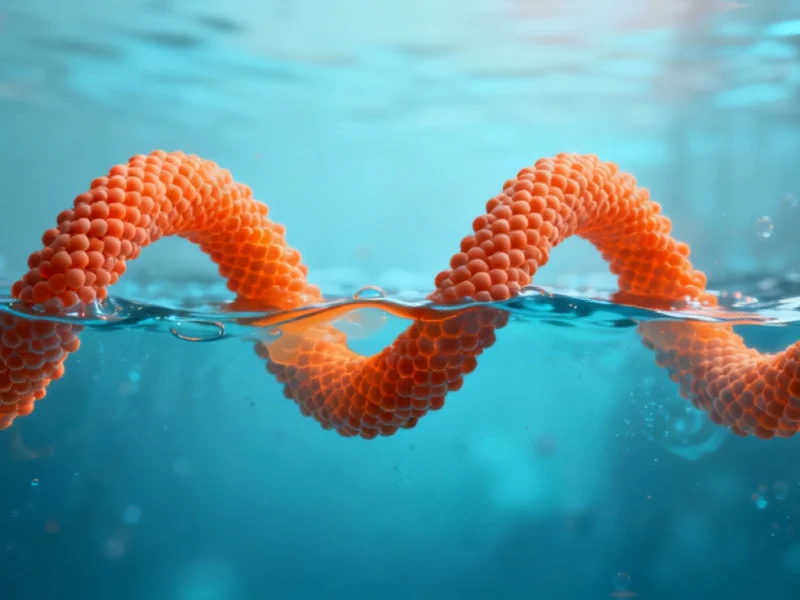Unexpected Chirality Discovery in Common Polymers
Researchers have discovered that many conjugated polymers, long considered structurally symmetrical, can spontaneously develop chirality according to a new study published in the Journal of the American Chemical Society. The finding, which surprised the scientific community, could enable development of more efficient electronics inspired by natural systems.
Decades-Old Mystery Solved Through Collaborative Research
The research collaboration included teams from the University of Illinois Urbana-Champaign, Georgia Institute of Technology, University of North Carolina, and Purdue University. According to reports, the study examined 34 different polymers, with approximately two-thirds spontaneously forming chiral structures when their concentration in solution increased.
“That took our community by surprise, because conjugated polymers have been studied for half a century,” said Ying Diao, professor of chemical and biomolecular engineering at Illinois, who led the project. “These new chiral helical states of matter have basically been hiding in plain sight.”
Mechanism Behind Spontaneous Chirality Revealed
Sources indicate the team discovered a strong correlation between liquid-liquid phase separation and the emergence of chirality, a phenomenon they refer to as spontaneous chiral symmetry breaking. When polymers reached sufficient concentration in solution, they spontaneously twisted into either left- or right-handed configurations without any external chiral influence.
To understand why some polymers developed chirality while others didn’t, researchers reportedly applied machine learning to analyze molecular features across the polymer library. The analysis revealed that polymers with longer molecular chains were more likely to form chiral assemblies, and unexpectedly, the presence of oxygen atoms in side chains strongly predicted chiral behavior.
Technological Implications for Future Electronics
Analysts suggest this discovery could lead to significant advances in electronic device performance. In nature, chiral systems like those involved in photosynthesis enable highly efficient electron transport. The report states that mimicking this behavior could revolutionize various technologies.
“We are thinking about using chirality to control conductivity — for example, in transparent conductors for phones or in solar cells that could be more stable and efficient,” Diao explained. “In our computers, electrons bounce around and heat is a big problem. But if we make chiral versions, we think charge transfer could be extremely efficient, just like in nature.”
Broader Scientific Context and Future Directions
The discovery comes amid other significant technological developments, including advancements in AI technology and expanded AI integration in operating systems. Meanwhile, progress continues in chemical synthesis methods and media technology platforms, with new analytical approaches emerging across multiple fields.
According to the researchers, this work provides guidance for studying the many conjugated polymers synthesized over the years and for designing new polymers with enhanced properties. The study builds on previous research documented in related chemical literature while opening entirely new avenues for exploration.
“What’s nice about this is, this is not the end of the story,” said Georgia Institute of Technology chemistry professor John Reynolds, a senior co-author. “This work provides guidance to polymer scientists in the field for studying the many, many conjugated polymers that have been synthesized over the years.”
This article aggregates information from publicly available sources. All trademarks and copyrights belong to their respective owners.



